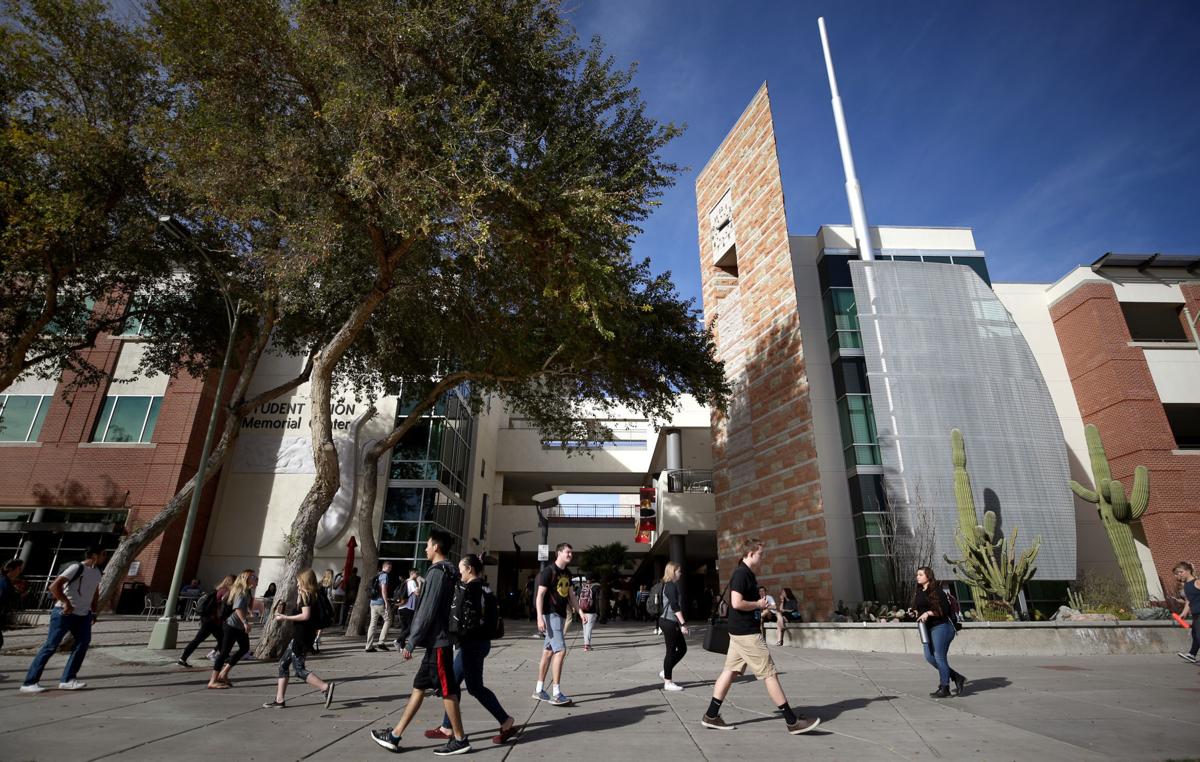WASHINGTON — State support for students at Arizona’s three public universities has fallen by 53.8 percent since 2008, more than three times the national decline over the same period, according to a new report.
The Center on Budget and Policy Priorities said the Arizona cuts were the most extreme example of a national trend that has seen a total reduction in state aid of nearly $9 billion over the 10 years, as states scrambled to close budget gaps caused by the recession.
Despite efforts by states in recent years to reverse the trend —including in Arizona, where state support per student rose 4.25 percent last year — the report’s authors said they worry those increases are slowing down.
“The clear majority of states have been reinvesting and that has been a broad trend over the past few years,” said Michael Mitchell, a senior policy analyst at the CBPP.
“But there are indications that we can see that this reinvestment is trailing off and the amount of reinvestment that we’ve seen over the past few years just hasn’t been enough to make up for the drastic magnitude of cuts over the time period we’re looking at,” he said.
Those cuts average 16 percent per student nationally since 2008, the report said.
Arizona’s 53.8 percent reduction was largest in the nation, with Louisiana next-closest with a 44.9 percent reduction. In terms of an actual dollar reduction, however, Arizona’s per-student cut of $3,450 was fourth-highest, behind Louisiana, New Mexico and Alabama.
While the cuts have been partially offset by increases in federal aid — an average Pell grant grew 23 percent during the period — steady increases in tuition continue to make college unaffordable for many, according to the report.
“We have seen increases in federal student aid, but in states where tuition costs have increased rapidly those additional federal investments have not kept up with rising college costs,” Mitchell said. “The net cost of attendance has increased even for low-income students at four-year colleges.”
Vianney Careaga, student regent on the Arizona Board of Regents, said in an email that the report’s “findings do not surprise me, but rather echo similar findings in reports issued” by the regents.
Careaga and others pointed to recent efforts to improve the situation in Arizona. Those include the regents “50-50” plan, which aims to increase per-student aid for state residents from the 2015 level of 34 percent to a level of 50 percent — an improvement, but still well below the 2008 level of 72.2 percent.
Sarah Harper, a spokeswoman for the board, said in an emailed statement that the state budgeted $8 million toward that plan this year and $15 million next, adding that the regents are “grateful” for the support of the model by Gov. Doug Ducey and the Legislature.
Advocates also point to a law signed by the governor this year that they say will allow the state’s universities to fund up to $1 billion in infrastructure and research projects in coming years.
The prime sponsor of that bill, Rep. Paul Boyer, R-Phoenix, said more support is needed, but the state is in a tough spot.
“We got here because of decisions the state made between fiscal year 2004 and fiscal year 2009, which brought about $4.7 billion in new spending,” said Boyer, the chairman of the House Education Committee. “We had ongoing permanent spending without an ongoing permanent revenue source.”
He said the state needs to have “taxation that is predictable” to increase higher education support. But education funding is a large part of the budget, Boyer said, making it a target for cuts.
“There’s three big buckets in the budget: education, public safety and health care, which is about 90 percent of the budget,” Boyer said. While education accounts for about half that amount “usually nobody wants to take away from public safety or health care.”
Mark Wiederspan, assistant professor of higher and postsecondary education at Arizona State University, echoed that.
“Some of the reasons we’re seeing declines in higher education, at least for Arizona, is because there’s been an increase in other state services such as Medicaid and our prisons,” Wiederspan said. “The only way to reverse this is to simply put more money in higher education, but the question of where that money comes from remains unanswered.”
Wiederspan said he does not see the situation changing anytime soon.
“The way that Arizona is going with, in terms of the tax rate and spending on other state services that draw away funding from higher education, this will continue to be a significant problem for Arizona,” he said.





